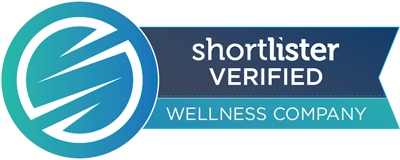
While the introduction of vaccines has been promising, its positive effects on businesses and households have yet to be felt across the board. While the United States has fully vaccinated (administered 2 doses for) more than 32% of its population, Canada has only fully vaccinated 3.3% of its own. Canada isn’t the only region that is facing a new wave of shutdowns, restrictions, and stay-at-home orders either. States like Michigan and countries like India continue to combat the pandemic and its complications. As disappointing as this may be, employers must adapt to the situation and keep employees hopeful about the future and invested in their well-being. One way to do that is through improved workplace wellness.
In a recent Deloitte report on the ROI (return on investment) of workplace mental health programs, mental health issues accounted for 30 to 40% of short-term disability claims, and 30% of long-term disability claims, in Canada as of 2018. The researchers of this study estimated that poor mental health in the workplace cost organizations about $50 billion CAD in annual economic costs. Similarly, about 500,000 workers were unable to work due to poor mental health during a given week. Even with a poorly executed workplace wellness program (low ROI), companies could see higher-than-average cost savings as they relate to mental health claims. As social distancing restrictions continue, workplace wellness becomes that much more important.
In light of more shutdowns, Canadians have become increasingly frustrated when it comes to government intervention and isolation. Disheartening sentiments of this nature can discourage employees from practicing health-promoting habits, including staying inside and obeying restrictions. Human resource executives, therefore, need to prioritize workplace wellness and its results as a necessity when it comes to employee safety and productivity. This, however, may be easier said than done.
In the face of rising cases, a lack of vaccines, and continued isolation, it may be more difficult than ever to motivate employees to further participate in workplace wellness programming. To overcome this solution, HR managers need to utilize game theory, community development, and other engagement strategies to maximize employee participation and, therefore, maximize one’s workplace wellness ROI.
 Engagement is one of the most sought-after outcomes of any workplace wellness program. The more participants, the better the returns – for both the organization and the individuals. Unfortunately, maximizing engagement can be an extremely difficult task, particularly in remote environments where the available channels for engagement are relatively poor. Thankfully, there are a variety of accessible and implementable engagement strategies that HR leaders can leverage in order to upgrade their current workplace wellness participation rates. One of these is game theory.
Engagement is one of the most sought-after outcomes of any workplace wellness program. The more participants, the better the returns – for both the organization and the individuals. Unfortunately, maximizing engagement can be an extremely difficult task, particularly in remote environments where the available channels for engagement are relatively poor. Thankfully, there are a variety of accessible and implementable engagement strategies that HR leaders can leverage in order to upgrade their current workplace wellness participation rates. One of these is game theory.
There is a reason why the video-game industry is worth more than the sports and film industry combined; people love playing games. Whether it be a game of cards or a corporate activity, humans, especially employees, enjoy the feeling of playful competition. The recent wave of workplace wellness solutions has utilized game theory to create wellness-related platforms for employees to compete against each other.
From group-related challenges to individual goals, organizations can use leaderboards, points, and even rewards to encourage employees to improve their level of engagement and wellbeing. For example, an enterprise may offer a small prize for the corporate team that ranks the highest in terms of goals accomplished by the end of the year. This sort of challenge is an excellent way to increase participation, strengthen team-building and community development, and distract users from the greater, uncontrollable issues happening around them.
If you are interested in improving the engagement of your workplace wellness programs, book a discovery call with Sprout today to learn how you can deliver better employee experiences.
